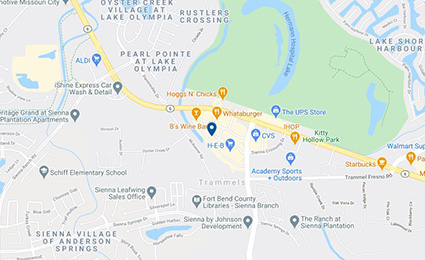Transforaminal Lumbar Interbody Fusion (TLIF)
What is a Transforaminal Lumbar Interbody Fusion?
Transforaminal lumbar interbody fusion, or TLIF, is an innovative type of spinal fusion that allows surgeons to reduce the risk of nerve injury by approaching the spine from the side. Through a single incision in the back, surgeons remove the damaged bone and disc, and replace it with a spacer and bone graft material that includes human growth protein and the patient’s own bone marrow. The procedure provides a 360-degree fusion that allows less disruption to the tissue.
The minimally invasive procedure has the benefit of eliminating scar tissue in the spine, which allows for revision spine surgery if needed in the future. Patients also typically experience less blood loss, decreased surgical time, reduced trauma to surrounding tissues, shorter hospital stays, and higher rates of successful vertebrae fusion than through other procedures.
What to expect during a transforaminal lumbar interbody fusion
TLIF back surgery is done through the posterior part of the spine. Through an incision in the back, the damaged disk material is removed, and space is made to insert the bone graft. Screws and rods are used to keep the spine stable. The procedure takes about three to six hours. Patients usually remain in the hospital one to four days. Physical therapy will follow.
Your spine surgeon will give you specific information related to your condition and lifestyle goals, as well as a detailed description of the surgery and instructions on how to make the best recovery.
Reasons for a transforaminal lumbar interbody fusion
A TLIF might be recommended for patients who have spinal instability that is causing lower back pain or leg symptoms that have not improved with non-surgical treatments, such as medication and physical therapy. Patients with spondylolisthesis, herniated disks, and degenerative disk disease might benefit from TLIF surgery, which is designed to eliminate the disk as the source of mechanical back pain.
What you can expect at UTHealth Neurosciences
The UTHealth Neurosciences Spine Center brings together a multidisciplinary team of board-certified, fellowship-trained neurosurgeons, neurologists, researchers, and pain management specialists who work together to help provide relief for even the most complex problems. Your team will share insights, leading to better treatment decisions and outcomes.
We first investigate nonsurgical treatment options, including medical management, pain management, physical therapy, rehabilitation, and watchful waiting. When surgery is needed, our neurosurgeons routinely employ innovative minimally invasive techniques. Throughout the treatment process, we will work closely with the doctor who referred you to ensure a smooth transition back to your regular care. While you are with us, you will receive expert care, excellent communication, and genuine compassion.
Anatomy of the neck and spine
- The cervical region (vertebrae C1-C7) encompasses the first seven vertebrae under the skull. Their main function is to support the weight of the head, which averages 10 pounds. The cervical vertebrae are more mobile than other areas, with the atlas and axis vertebra facilitating a wide range of motion in the neck. Openings in these vertebrae allow arteries to carry blood to the brain and permit the spinal cord to pass through. They are the thinnest and most delicate vertebrae.
- The thoracic region (vertebrae T1-T12) is composed of 12 small bones in the upper chest. Thoracic vertebrae are the only ones that support the ribs. Muscle tension from poor posture, arthritis, and osteoporosis are common sources of pain in this region.
- The lumbar region (vertebrae L1-L5) features vertebrae that are much larger to absorb the stress of lifting and carrying heavy objects. Injuries to the lumbar region can result in some loss of function in the hips, legs, and bladder control.
- The sacral region (vertebrae S1-S5) includes a large bone at the bottom of the spine. The sacrum is triangular-shaped and consists of five fused bones that protect the pelvic organs.
Spine Disease and Back Pain
Arthrodesis
Artificial Disc Replacement
Cauda Equina Syndrome
Cervical corpectomy
Cervical disc disease
Cervical discectomy and fusion
Cervical herniated disc
Cervical laminectomy
Cervical laminoforaminotomy
Cervical radiculopathy
Cervical spondylosis (degeneration)
Cervical stenosis
Cervical spinal cord injury
Degenerative Disc Disease
Foraminectomy
Foraminotomy
Herniated discs
Injections for Pain
Kyphoplasty
Laminoplasty
Lumbar herniated disc
Lumbar laminectomy
Lumbar laminotomy
Lumbar radiculopathy
Lumbar spondylolisthesis
Lumbar spondylosis (degeneration)
Lumbar stenosis
Neck Pain
Peripheral Nerve Disorders
Radiofrequency Ablation
Scoliosis
Spinal cord syrinxes
Spinal deformities
Spinal injuries
Spinal fractures and instability
Spinal Cord Stimulator Trial and Implantation
Spinal Fusion
Spinal Radiosurgery
Spine and spinal cord tumors
Spondylolisthesis
Stenosis
Tethered spinal cord
Thoracic herniated disc
Thoracic spinal cord injury
Transforaminal Lumbar Interbody Fusion
Vertebroplasty
Contact Us
At UTHealth Neurosciences, we offer patients access to specialized neurological care at clinics across the greater Houston area. To ask us a question, schedule an appointment, or learn more about us, please call (713) 486-8100, or click below to send us a message. In the event of an emergency, call 911 or go to the nearest Emergency Room.











